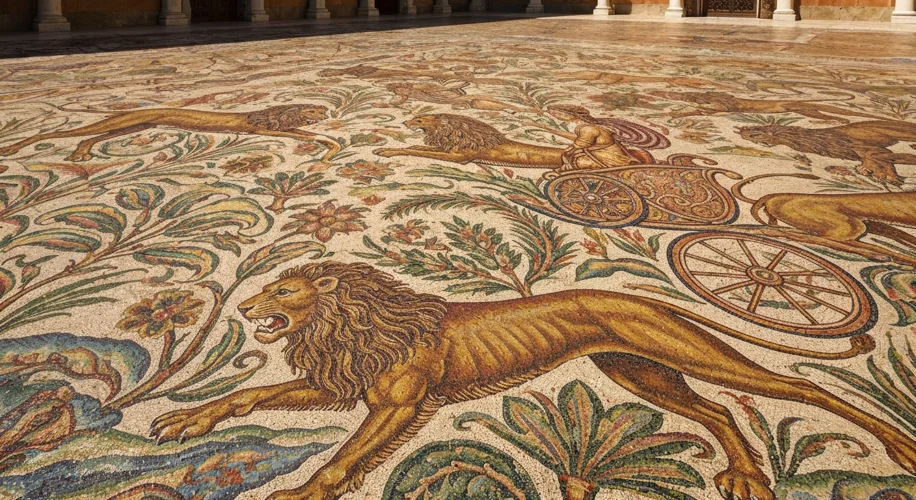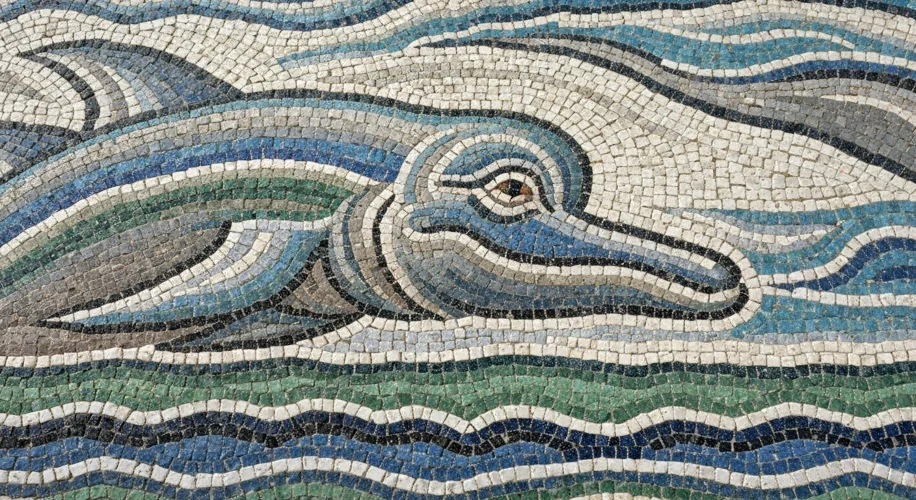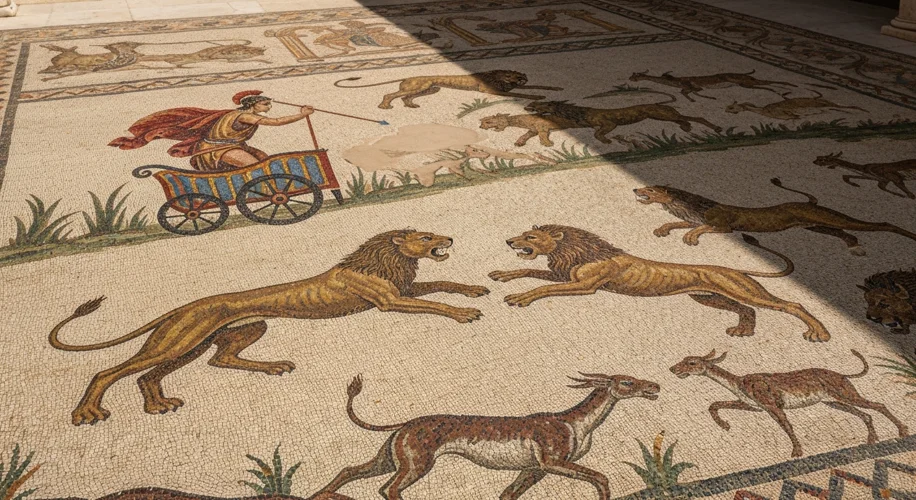Imagine stepping into a Roman villa, the sunlight streaming through a courtyard, illuminating not just polished stone floors, but vibrant, intricate narratives laid out in tiny, colorful tesserae. These aren’t mere decorations; Roman mosaics were the multimedia of their day, telling stories, displaying wealth, and whispering symbolic secrets to those who knew how to look.
The art of mosaic-making, the creation of images from small pieces of stone, glass, or ceramic, has ancient roots, stretching back to Mesopotamia and Egypt. But it was the Romans who truly elevated it to an art form, spreading its influence across their vast empire, from the chilly shores of Britannia to the sun-baked sands of North Africa.

From the 2nd century BCE onwards, mosaics became a hallmark of Roman architecture. Initially, simpler geometric patterns dominated, often in black and white, showcasing a developing mastery of the technique. But as the Republic gave way to the Empire, and wealth flowed into the heart of Rome and its provinces, mosaics blossomed into incredibly complex and colorful compositions. They adorned the floors and walls of public baths, temples, and basilicas, but their most spectacular manifestations were found in the private homes of the wealthy – the villas and domus.
Consider the villa at Bignor in Sussex, England. Here, floors from the 4th century CE reveal stunning scenes: a fearsome Medusa, her snake-hair a testament to the artist’s skill; a robust depiction of Hercules; and vibrant hunting scenes teeming with life. These weren’t just pretty pictures; they were statements. The sheer expense and artistry involved in creating such a mosaic broadcasted the owner’s status and sophistication.
But Roman mosaics were more than just a display of wealth; they were a language. The choice of subject matter was rarely accidental. Mythological scenes, like those of Jupiter, Venus, or the ubiquitous Medusa, served to entertain and educate, referencing popular stories and moral tales. The prevalence of hunting scenes, especially those featuring exotic animals like lions, elephants, and tigers, spoke of the owner’s power and the empire’s reach – the ability to conquer not just lands, but nature itself.
Even the seemingly simple geometric patterns held meaning. The checkerboard pattern, for instance, could symbolize the duality of life, the balance of opposing forces, or even represent the pavement of a city. Circular motifs might allude to the cosmos or the eternal cycle of life.

The craftsmanship was extraordinary. Skilled artisans, often from the Eastern Mediterranean, where mosaic traditions were strongest, would meticulously cut and shape thousands, sometimes millions, of small cubes, known as tesserae. These could be made from marble, limestone, glass, or even precious stones, each carefully chosen for its color and texture. The process was painstaking: a bed of mortar was laid, the design was sketched, and then the tesserae were hammered into place, often at a slight angle to catch the light. The result was a durable, luminous surface that could withstand centuries of wear.
There were different styles, too. The opus tessellatum, using tesserae roughly uniform in size, was the most common for floor mosaics. For more detailed wall decorations or smaller panels, opus vermiculatum employed tiny tesserae to create fine lines and exquisite shading, almost like painting with stone. Then there was opus sectile, which used larger, cut pieces of colored stone to create geometric or figurative designs, more akin to inlay work.

The fall of the Western Roman Empire saw a decline in large-scale mosaic production in the West. However, the art form continued to thrive in the East, particularly in the Byzantine Empire, where it evolved into dazzling gold and glass mosaics adorning churches like the Hagia Sophia and San Vitale in Ravenna. These later mosaics often focused on religious iconography, but the underlying principle of creating enduring beauty from countless tiny pieces remained.
Today, when we encounter a Roman mosaic, whether in situ at an archaeological site or in a museum, we are not just looking at ancient floor tiles. We are glimpsing into the lives, beliefs, and artistic aspirations of a civilization that shaped our world. Each tessera is a testament to the skill of an anonymous artisan, and each composition a vibrant echo from the past, inviting us to decode its stories and appreciate its enduring artistry.

